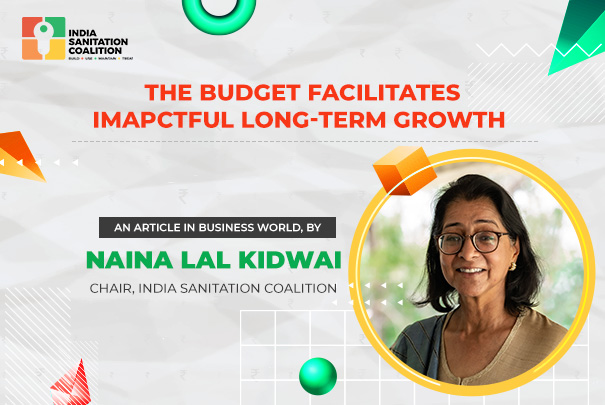The budget facilitates impactful long-term growth

THE UNION BUDGET has set an exciting target of large capital expenditure to stimulate growth and economic recovery
Capital investment holds the key to sustained economic revivalandae cordingly the outlayforcapital expenditure in the Union Budget 2022-23has
been stepped up by over 35 per cent from 5.5 lakh crore in 2021-22 to Rs 7.50 lakh crore in 2022-23. Thisoutlay in 2022-23, will be 29 percent of GDP.lacomparison is madebetween the revised estimates of 2021-22 and budgetestimates of 2022-23, then the increase in Capex stands at 24.5 per cent, stilla substantial increase
The speed of implementation of public spending will be key to bringing back muchneeded demand and consumption to spur private sector investment which remains a laggard. A UNESCO study has shown that 75.5 lakh new jobs were created over SBM (Swachh Bharat mission) 2014-2019. Channelling infraspendsinto more job-creating labour-intensive infrastructure will helpin demand acceleration in the near term and myhope is that much-needed development of sanitation and water infrastructure will continue to get attention.
The finance minister highlighted the coverage under Har Ghar, Nal Se Jal, which is 8.7 crore households. Of this, 5.5 crore households were provided tap water in the last two years itself. Allocation of Rs 60,000 crore has been made with an aim to cover 3.8 crore households in the budget for 2022-23, which is substantially higher than the allocation in 2021-22
Such spending help not only with improving the health and quality of life of our citizens but job creation in implementing the schemes. Thesejobs in both rural and urban India will surconsumption and demand, fuelling growth.
Further, an important critique of the Union Budget 2022-23 is that it does littletoput more money in the hands of the rural and urban poor and middle-class consumers. Many of us had hoped for a Central job guarantee scheme, covering the urban poor, to be supported through the Union Budget 2022-23 to provide jobs and jumpstart demand.
We had also expected an increased allocation for MGNREGS that helped rural households during the last two years of the pandemic. Disappointingly the budget has reduced allocation for MGNREGS, by >25 per cent over the revised estimates for the scheme in 2021-22 However it is possible that should it be required, this can be stepped up as the revenue and privatisation targets for the year are conservative.
The government has made the environment a key focus and announced the issuance of sovereign green bonds to raise finances to support projects that reduce India scarbon footprint. I believe it is sig nificant that India will do its first-ever sovereign bond offering as green bonds. Battery swapping and the push for EVS, better urban planning, PLI for renewables, all reflect the green focus of this budget which is heartening to note.
So, while this budget may not have met the expectations of being a short-term consumption-booster yet it appears to have the necessary elements for creating impactful long-term growth, generating jobs and consumption in the medium term. Moreover, investment in infrastructure will help lower logistic costs making Indian industry competitive by bringing down costs and helping companies export and become suppliers to the world.
